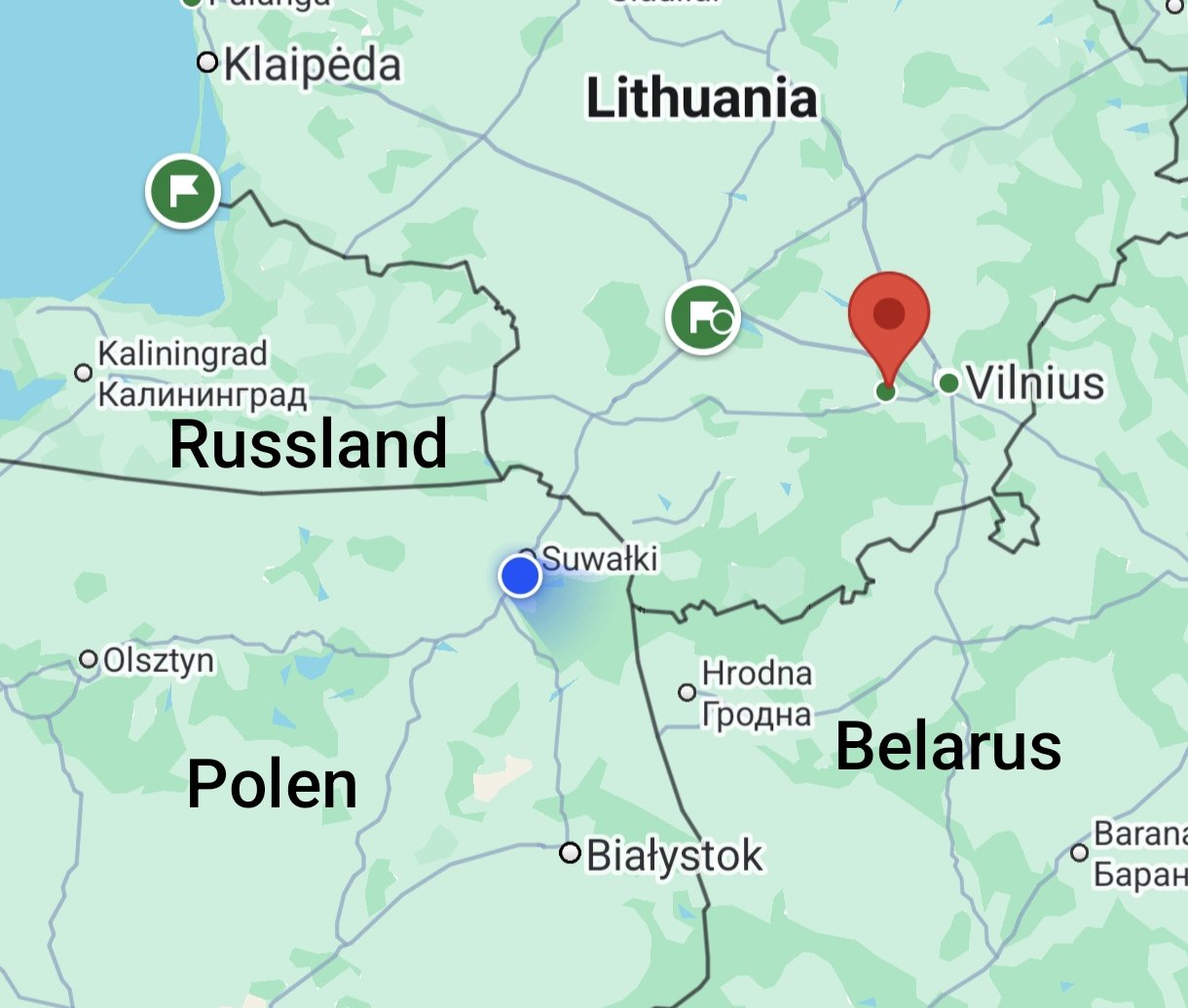Why the Suwałki Gap Is NATO’s Weakest Link — and Russia’s Tempting Target
On the map it looks like a thin strip of countryside. Just 65 kilometers of sparsely populated land where Poland meets Lithuania. But the Suwałki Gap has become one of the most contested pieces of terrain in the world -- NATO’s exposed choke point and Russia’s most obvious pressure valve in Europe.
 |
| Suwalki Gap is back in focus. Illustration via: SaschaDueerkop |
To its east is Belarus, Moscow’s closest ally and now functionally integrated into Russia’s military command. If Russian forces ever sealed the corridor in a crisis, Lithuania, Latvia, and Estonia would be cut off from reinforcements. NATO calls it its “Achilles’ heel.”
I feel this needs to be said.
— Fellaraktar🇺🇦 (@fellaraktar) September 13, 2025
The Suwalki gap is only a gap while “kaliningrad” exists.
If “kaliningrad” doesn’t exist.
It’s just Suwalki.
The solution is clear.
The hardest part will be deciding how it gets carved up.
But that’s a local issue.
They’ll figure it out. pic.twitter.com/1Ney5sqvzK
The fear is not new. Analysts have warned since 2014, when Russia annexed Crimea, that the gap could be the first target in a wider European war. RAND war games once suggested Russian troops could reach Baltic capitals within 60 hours if NATO was slow to respond.
This is NATO’s choke point — the Suwałki Gap.
— Shaun Pinner (@olddog100ua) September 13, 2025
Russia’s joint military drills with Belarus and drones flying into Poland aren’t careless accidents, they’re deliberate provocations.
This is as close to WW3 as we’ve ever been.
Remember when Russia swore it wouldn’t invade Ukraine? https://t.co/boGaYv1S11 pic.twitter.com/VcDyXEF9ps
Moscow has reportedly simulated such scenarios in its Zapad exercises, while NATO has staged its own “Iron Wolf” and “Dragon” drills to stress-test the corridor’s defenses.
The war in Ukraine has raised the stakes. Russian drones have repeatedly violated Polish airspace in recent days. Romania scrambled F-16s on Saturday to shadow another drone inside its skies. Each incident brings the war closer to NATO’s borders and highlights the very scenario Suwałki was meant to warn about: spillover by design, not accident.
Ukrainian President Volodymyr Zelenskyy has bluntly called these “calculated routes” -- small steps toward big losses.
Zapad-2025 Exercise:
— 🇺🇸 🇺🇸 🇺🇸Midobecker 🇺🇸 🇺🇸 🇺🇸 (@midobecker_1) September 13, 2025
A russian BTR-22 IFV was spotted in Hrodna, Belarus which would be the launching point for an attack that would start in Lithuania towards Kaliningrad to close the Suwałki Gap.
NATO & russia has been training troops extensively with military exercises. pic.twitter.com/CAIDSDjotw
Civilian infrastructure adds another layer of urgency. The Via Baltica highway and the under-construction Rail Baltica line both pass through the gap, as does the Poland–Lithuania gas link and a critical electricity interconnector.
In peacetime, these links bind the Baltics to the EU. In wartime, they are lifelines that could be severed in days.
Russia has long pushed for a transit corridor from Kaliningrad to Belarus -- an idea Poland and Lithuania equate with the 1930s demand for an extraterritorial link through the “Polish Corridor” before the Nazi invasion.
That proposal was rejected, but the logic persists: Russia sees Suwałki as a lever, NATO sees it as a liability.
Zapad-2025 Exercise
— OSINT Intuit 🇺🇸 🇨🇦 🇬🇧 🇺🇦 🇮🇱 🇬🇪 (@UKikaski) September 13, 2025
A brand new Russian BT-22 AFV wasspotted in the Belarusian city of Hrodna which is the logical launching point for an incursion through Lithuania to Kaliningrad along the Suwałki Gap.#OSINT #NATO pic.twitter.com/iWhymVNWvl
The terrain makes defense complicated. Thick forests, rivers, and poor roads slow heavy armor but also favor ambushes.
NATO has reinforced with multinational battlegroups, but its forces remain rotational rather than permanent -- a political concession to the 1997 NATO–Russia Founding Act, which Moscow has effectively discarded since invading Ukraine.
🚨🔵⚠️🇪🇺🇷🇺 The Suwałki Gap remains NATO’s weakest point.
— THE UNKNOWN MAN (@Theunk13) September 13, 2025
Russia’s joint drills with Belarus and repeated drone intrusions into Poland aren’t random—they’re calculated provocations. The risk of escalation is real. With Moscow’s track record of denying hostile intentions right up… pic.twitter.com/lUkxQbiqLX
For the Kremlin, threatening Suwałki is less about conquest than credibility. Cutting the corridor, even briefly, would test NATO’s collective defense promise under Article 5 and showcase Russia’s ability to fracture Europe’s security order.
For NATO, holding it is about survival. Losing the gap would isolate three allies and shatter deterrence.
Video from Kaliningrad reportedly shows #Russian Iskander-M SRBM launchers deployed on public roads just miles from the Polish border.
— Tactical Insights (@TacIns75) September 13, 2025
🔎 Likely dispersal drill / show-of-force near the sensitive Suwałki Gap.
⚠️ Range: ~500 km — capable of striking deep into #NATO territory. pic.twitter.com/LCMEjKIYiR
At a time when drones crash near Polish villages and F-16s scramble over Romania, Suwałki’s relevance is no longer hypothetical.
It is the hinge on which Europe’s balance of power now rests -- a reminder that in great-power contests, sometimes the fate of nations turns on a strip of farmland barely 40 miles wide.
